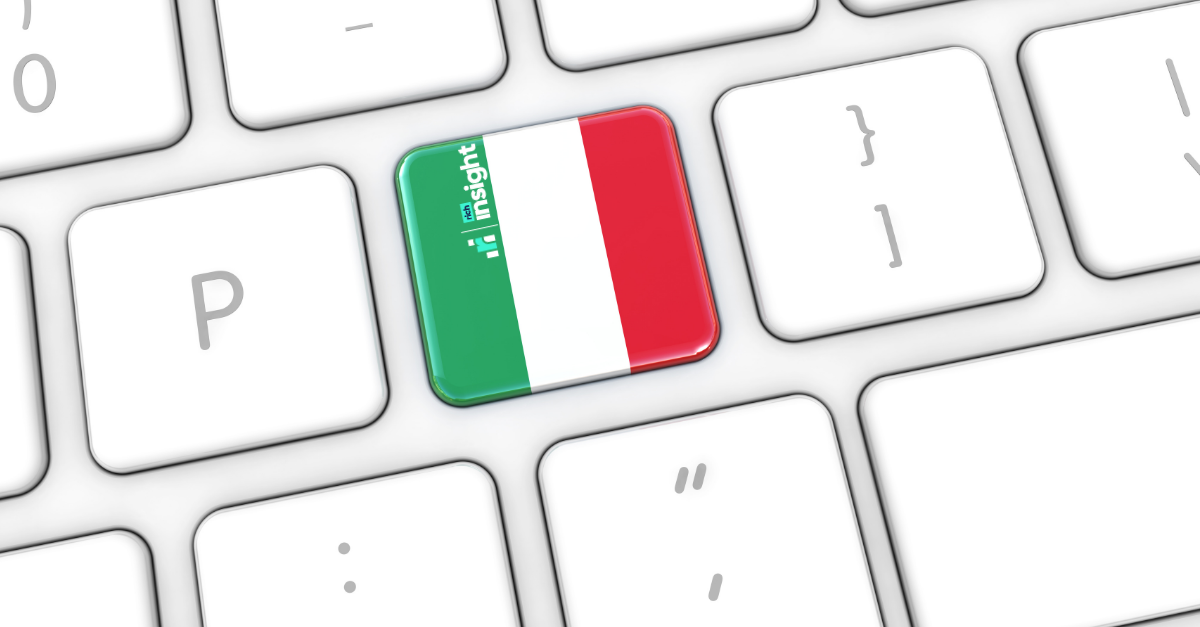Shopping in Italy might be best known for luxury fashion and designer boutiques, but the EU’s third largest economy is fast-becoming a renowned ecommerce hub too. In fact, Italy was the 13th largest ecommerce market in the world in 2023 with €80 billion of online sales.
To gain access to the country’s growing proportion of online consumers, you need to adopt a localised Italian marketplace strategy. Here's what you need to know.
Italy marketplaces overview
87% of Italy’s 60 million population uses the internet, but only two in five Italian internet users shopped online in 2023 with 65% of Italians preferring to shop in-store. Despite the lower-than-average online shopping penetration, Italy still accounts for 6% of European ecommerce spend and is one of the fastest growing ecommerce markets in Western Europe with huge potential for new market entrants. Unsurprisingly for a country embedded in fashion, clothing is the country’s largest online product category (one fifth of online sales) with hobby & leisure goods and consumer electronics in close pursuit. Amazon.it is the runaway marketplace leader attracting 160 million monthly visits with eBay.it and Italian classifieds marketplace Subito also popular shopping destinations.
Preparing for the Italian market
To expand your marketplace presence in Italy successfully, follow these three steps:
1) Focus on short-term objectives
When entering a new market, you should prioritise your short-term (1-2 years) goals over long-term aims. This will help you determine which online Italian marketplaces are most closely aligned to your needs. In particular, look at the suitability, viability and profitability of Italian marketplaces.
- Suitability. Be it clearing last season’s garments or building awareness of your new range of products in Italy, create a list of 3-5 core objectives for the Italian market. Remember to take into account Italian customers’ buying habits and demographics.
- Viability. Italy has a cultural divide between north and south, with the wealthier north benefiting from better internet access and infrastructure too. Before expanding into Italy, consider the viability of delivery & returns, order fulfilment and national selling regulations across 20 Italian regions, including two of Europe’s largest islands, Sicily and Sardinia.
- Profitability. Although profitability should not be a key focus of the first 1-2 years, there’s no point entering the Italian market if there’s no path to breakeven at the very least. As such, decide whether the short-term costs of warehousing, delivery and marketing on each marketplace are sustainable in the long-run.
Check out our blog for more in-depth advice on suitability, viability and profitability.
2) Shortlist marketplaces according to your objectives
From car accessories (automobile.it) to designer fashion (Yoox), there’s a number of general and sector-specific marketplaces in Italy. To ensure you choose a marketplaces compatible with your aims, score your marketplace shortlist according to financial, product, regulatory and operational factors.
- Financial. Are you prepared to pay commissions per sale, monthly platform fees, fulfilment levies and advertising costs? Each Italian marketplaces has their own charges, so consider what is affordable for your business.
- Product. The key to marketplace selling is getting your product in front of the right customers, so find marketplaces that specialise in your product types, such as VidaXL for home and garden furniture.
- Regulatory. Although a unitary state, Italy is decentralised with regional parliaments, regulations and taxes that apply to selling goods - not to mention marketplaces’ own selling rules. For example, you’ll need to factor in a standard VAT rate of 22% into your pricing unless your goods are eligible for reduced rates.
- Operational. Do you usually outsource fulfilment to a third party or carry out all aspects of packaging and delivery in-house? Your operational preference will help you decide which marketplaces are suitable.
Remember: even if you sell on ebay.co.uk or Amazon.nl, the Italian entities are likely to have different costs and rules, and require specific selling accounts for the Italian site.
Read this blog to help you choose the right marketplaces in Italy.
3) Localise for the Italian market
Italian marketplaces and customers operate in a different way to other EU states, such as France, Germany and the Netherlands. To enter the world of Italian marketplaces successfully, make sure you adapt your approach for local Italian nuances. Here are five areas to think about.
- Language. 93% of the population speak Italian as a first language and most Italian marketplaces require you to provide product listings in Italian. Italian customers also expect customer support in Italian and seeing a foreign contact number or shipping address may influence their final buying decision.
- Content. Using Google Translate for your listings is not enough - you need to ensure that the content of your product listings uses Italian expressions, keywords and relatable images too. In particular, over a third of Italian online sales are made by mobile, so make sure all your content is mobile-ready.
- Measurements. Italy uses the metric system, so use litres, grams and kilos in product descriptions. In addition, although Italian shoe sizing conforms to the EU standard, Italian garment sizing tends to run on the smaller side (in comparison to the US and the UK).
- Deliveries & returns. Italian couriers have one of the highest first-attempt delivery success rates (91%) and on-time ratios (97%) in Europe, but most Italian shoppers expect free or low-cost shipping. When it comes to returns, Italians send back 5% of online purchases, but this number rises to 40% for fashion items.
- Pricing and payments. Given the high proportion of mobile purchases, it’s no surprise that card payment (33%) and digital wallets (32%) are the most popular payment methods. However, Italy remains a high user of cash (44% of transactions) and offering a range of payment options is advisable.
For more information on localisation, check out how to nail your marketplace location strategy and optimise product listings for local marketplaces.
Seek Italian marketplace expertise
One of Western Europe’s fastest-growing ecommerce markets ✅
Less competition than Germany and the UK ✅
Increasing digitisation with huge potential for more online shoppers ✅
There’s a lot going for the Italian market and brands that get in early have an advantage. For advice on preparing and entering the Italian market, get in touch with us.





Blog Comments